UV rays and hot temperatures from the sun can cause plenty of problems with a vehicle’s appearance. That’s why it’s super important to protect your car from the sun to preserve the car’s finish. But it’s often easier said than done.
However, in this article, I’ll take you through 9 of the most effective ways to protect your car from the sun so it stays looking newer for longer. So let’s get started.
The Quick Answer
To protect your car from the sun, you need to think about the exterior, interior and under the hood. Here are 9 tips to keep your car protected from the sun.
- Apply paint protection (wax, sealant or ceramic coating)
- Apply a trim dressing
- Keep the car clean
- Don’t park under trees
- Keep the car dry
- Use interior sealants
- Don’t use a car cover
- Avoid over-polishing
- Maintain under fluid levels, tire pressure, battery and engine cooling system
How the Sun Causes Damage
To understand how you can actually protect your car from the sun, it’s important to know exactly how the sun causes damage to your vehicle. Most people tend to only think about UV rays, and how they cause the paint to fade, but there are several ways the sun causes issues.
- Causes plastic and rubber trim to fade
- Increases the risk of water spots
- Causes contaminants to bond to the exterior faster
- Accelerates fading of leather, interior plastics and fabrics
- Causes the paintwork to fade over-time
Luckily, there are plenty of ways to prevent this kind of damage. So now let’s jump into the top 9 tips to protect your car from the sun.
Apply Paint Protection
The single most important thing you can do to protect your car from sun damage, is apply a layer of paint protection in the form of a wax, sealant or ceramic coating.
There are a number of reasons why this helps:
- They offer a layer of UV protection
- It prevents water spots from damaging the paint in the hot sun
- They help to keep the car cleaner and stop contaminants binding to the paint and glass
UV Protection
Paint protection shields the vehicle’s finish from UV rays which can lead to fading over time. You car’s paintwork consists of a clear coat, which sits on top of the base coat.
The base coat is what provides the colour of your car. The clear coat is designed to protect the base coat underneath from dirt, corrosion, fading etc.

Paint protection is designed to preserve the clear coat. Over time, the clear coat wears away to a certain extent. However, the life of the clear coat can be extended by applying a layer of protection.
This works two-fold because, the wax/ sealant/ coating provides UV protection itself, to stop the base coat from fading, AND it helps to preserve the clear coat, indirectly protecting the base coat underneath.
Other Benefits
Waxes, sealants and coatings also help prevent water spots and keep the car clean, which is super important in summer to prevent further damage from the sun. More on these in the later sections of these articles.
Waxes vs Sealants vs Ceramic Coatings
So which type of paint protection should you go for? The three most popular options are waxes, sealants and ceramic coatings, and they all have different advantages and disadvantages.
Here’s a quick table to summarise the differences.
| Waxes | Sealants | Ceramic Coatings | |
| Durability | 2-3 months | 6-12 months | 1 year + |
| Ease of Application | Easy | Moderate | Difficult |
| Protection level | Low | Moderate | High |
| Cost | Low | Low | High |
Personally, I prefer to use waxes and sealants because they are much easier to apply and still offer a good level of protection. If you’re interested in the paint protection products I use, then check out my recommended products page for some more information.
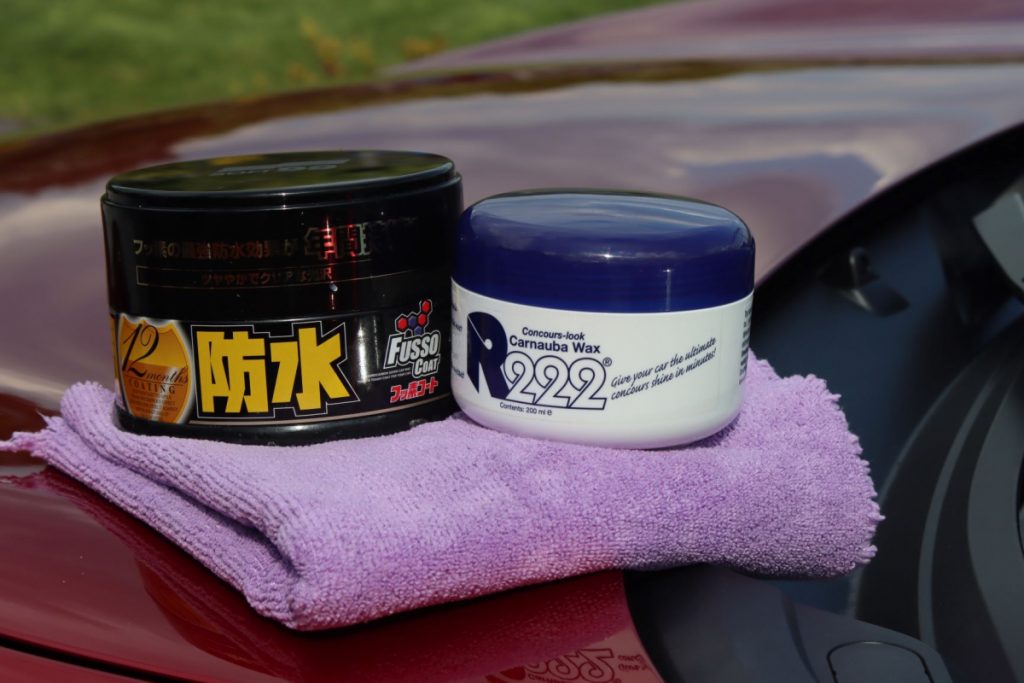
Apply a Trim Dressing
The plastic and rubber trim on cars are often the first part of the exterior to show sun damage. They are prone to fading quite quickly, and even cars that are just a couple of years old can show some signs of wear due to UV damage.
The best way to avoid the plastic and rubber trim from fading, is to apply a dressing. These are often in a liquid or gel format and can be applied using a microfiber towel after the car is washed and dried.
Plastic and trim dressings will restore the black-look, keep them shiny and protect them from UV-rays and fading during the summer months.
Most trim dressings will only need to be applied every few months. So a little effort can go a long way to protecting your car.
Keep the Car Clean
You may have heard this one before, but keeping your car clean goes a long way in terms of protecting it from the sun. But how exactly does it work? To understand this, we need to first discuss what “contaminants” on your vehicle’s exterior are.
All cars are exposed to the elements to a certain extent, and even those that are stored indoors are exposed when they’re being driven. This means they quickly get dirty and need to be cleaned. Normally, the wash process easily removes dirt and dust. However, other things can stick to the exterior as well.
These are called contaminants. There are many different types of contamination and they stick to the paint quickly and strongly. They include:
- Bird mess
- Tree sap
- Iron fallout
- Tar
- Dried bugs

These contaminants are a real issue because they actually stick to the paintwork and cannot be removed by routine washing if they are left on the car for too long.
When left to sit on the paint and glass, they effectively bond to the surface and can cause damage including the promotion of the rusting and corrosion process because they eat away at the top layer of paint.
Plus, these contaminants cause the paintwork to look dull and feel rough to the touch. Since they cannot be removed by washing if left to sit for too long, they need to be removed via a decontamination process called claying. Take a look at this article I’ve written on claying to learn more.
However, if you wash the car more frequently, then you can remove a lot of the contamination before it properly bonds to the paintwork.
These contaminants are a particular issue in Summer because of the hot weather. The heat actually accelerates the process by which these contaminants bond to the vehicle’s exterior.
Don’t Park Under Trees
So I know that one of the biggest pieces of advice that most people give when trying to protect a car from the sun’s UV rays is to park it in the shade. This of course, is logical advice. The car can’t get exposed to as much UV if it’s not in direct sunlight. However, it’s not all that simple.
One thing much worse than parking your car in the sun, is parking it under trees to try and get it under the shade. There’s two big problems with this:
- Bird mess
- Tree sap
When either of these two contaminants get on the paintwork, they can cause real issues and permanently damage the clear coat if they’re left on for too long.
Plus, they are also quite difficult to remove safely. Bird poo in particular is hard to remove safely without scratching the paintwork because it’s actually quite abrassive.
Care needs to be taken when removing bird mess by soaking it and trying to remove it using rather rather than any pressure during a contact wash with a mitt.
Tree sap is also a paint because it dries on the paint very quickly and bonds very strongly. This means that you need to use a specific tree-sap remover spray to get rid of it, because scrubbing at the paintwork will likely cause more harm than good by just scratching up the clear coat.
So, you should always aim to park your car in the shade, by parking it near buildings if possible. But if the choice is between parking under trees, or in direct sunlight, then just park in the sun.
As long as you have a good layer of paint protection on the car, and follow the rest of the steps in this article, then your paintwork will be fine.
Keep the Car Dry
Another way to protect your car from the sun, is to keep it dry as much as possible.
Of course, when it’s sunny there won’t be any rain to worry about, however, if there is still surface water on the car, when the sun comes back out, it can be an issue. Also, washing the car in direct sunlight should be avoided and the car should be kept dry as much as possible.
But why is this?
Well, when the car is in direct sunlight, the panels will be hot, so water evaporates much faster. This leads to water spots.
Water spots are a big issue because not only do they look bad, but they also actually corrode the paint on your car if left to sit there.
It’s not the water itself that causes the issue, but the impurities in it. These are often corrosive to some extent, and left behind when the water evaporates to leave spots all over your car. This process is known as water spot etching.
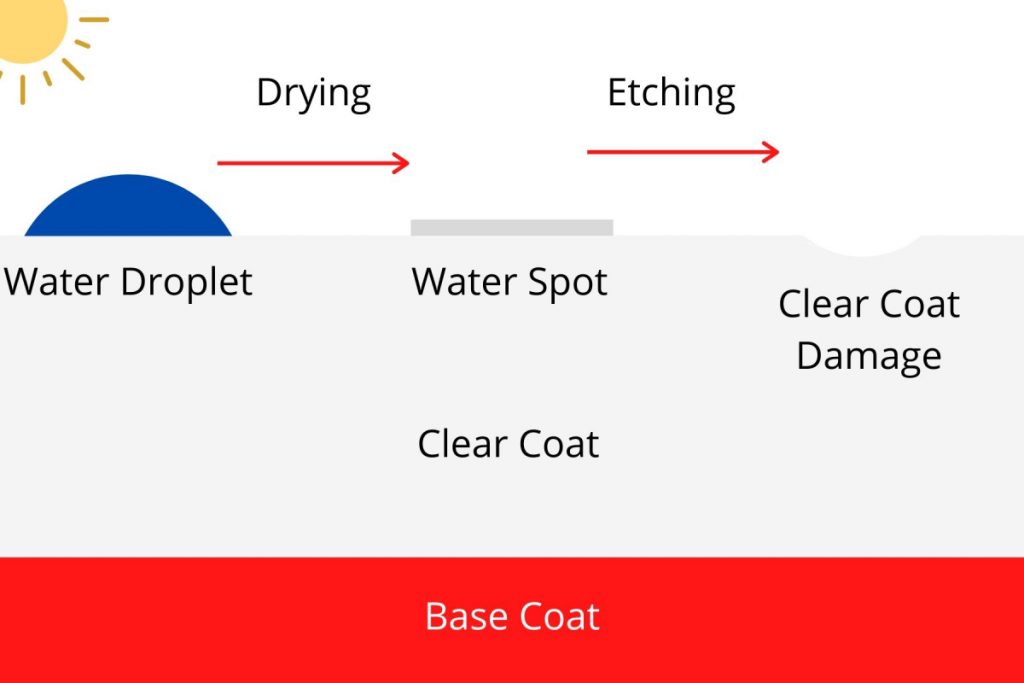
These water spots can be difficult to remove if left to sit on the surface, and can often require abrasion to be removed effectively. If you have water spots on your car, then check out this article I’ve written on 6 ways to tackle water spots.
Water spots are a big problem when the sun is out, because water dries much faster leading to acceleration of the etching process.
So, to protect your car, you need to avoid having water on your vehicle and keep it as dry as possible.
In Summer, it’s important to make sure you dry the car as soon as possible after it has been washed to avoid these water spots from evolving. And after it’s rained, you should try and wash and dry the car as soon as you can to avoid water spotting from occuring.
Take a look at this article I’ve written on how to dry a car properly to learn more about the most effective and fastest ways to do this.
It’s important not to dry the car after it has rained without washing it first, as this can often lead to scratches and swirl marks in the paintwork.
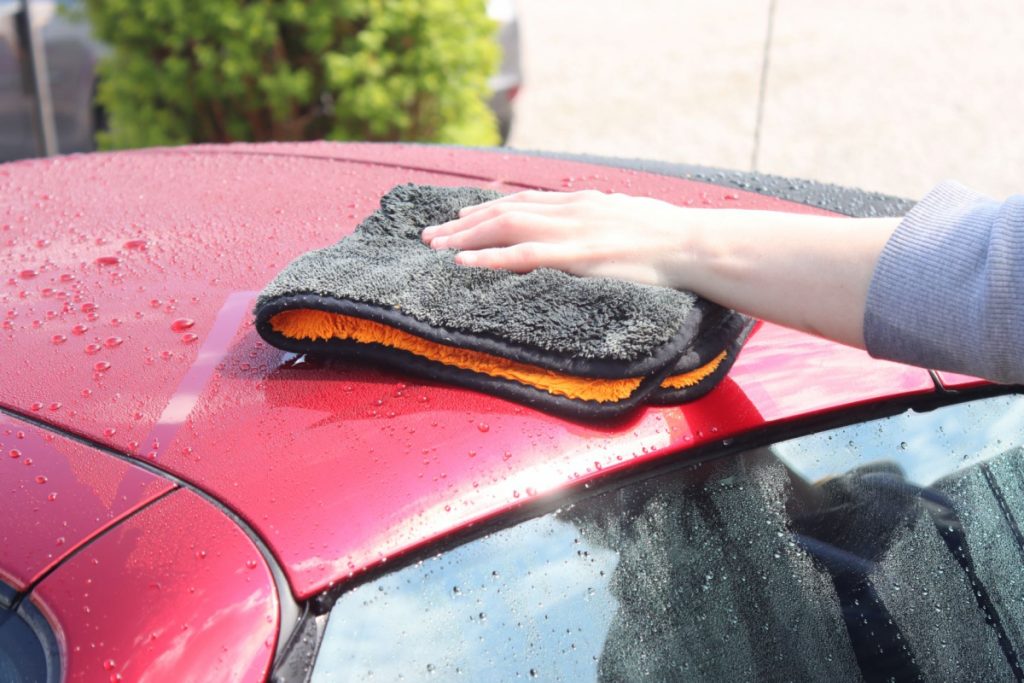
Use Interior Sealants
Often, when trying to protect a car from the sun, most people forget about the interior. But the interior of your vehicle is also subjected the sun’s harsh UV rays that can lead to fading over time.
If you want your car’s interior to look brand new for years to come, then you’ll need to take steps to protect it. Luckily, there are plenty of products out there that can help with this.
You can divide the surfaces in your car’s interior into the following: plastics, leather, fabric.
Each of these surfaces can be treated with a specific kind of sealant designed to help protect them. They help to prevent staining, keep the surface looking clean and new, and most importantly in this instance, stop fading from occurring due to exposure to UV rays.
They are usually all applied in a similar way. Firstly, the surfaces need to be cleaned and any residue from the cleaning products needs to be removed using a damp microfiber cloth to leave you with a bare surface.
Then the products are normally applied using a spray which can be spread using a microfiber applicator pad or cloth to ensure even coverage. Then you can use a dry microfiber cloth to buff away any excess once the product has been left to sit for the specified time (usually 10-60 minutes).
In terms of caring for leather, you need to look at leather sealants instead of conditioners to help protect from UV rays. Sealants are designed to apply a layer of protection, similar to the way a wax does on the paint. Conditioners are normally used to replenish the leather and help restore it and keep it supply.
Take a look at my recommended interior care products to read more about the sealants I use for my car’s interior plastics, leather and fabrics.
Don’t Use a Car Cover
Okay, so this isn’t really a tip on how to protect your car from the sun, but more about what not to do.
Car covers are huge culprits for scratches. Yes, even the ones that claim to be scratch-free.
It’s not actually the covers themselves that cause scratches, but the dust underneath. Your car’s clear coat (the top layer of paint), is actually incredibly delicate, and even the mildest forms of friction can cause micro scratches and swirl marks.
These kind of scratches are hard to see in normal lighting, but are very visible in direct sunlight and often look like spider webs or swirls. They also cause the car to look dull and flat in all kinds of lighting. So if you want glossy paintwork, you need to protect the clear coat.
Here’s what they look like.
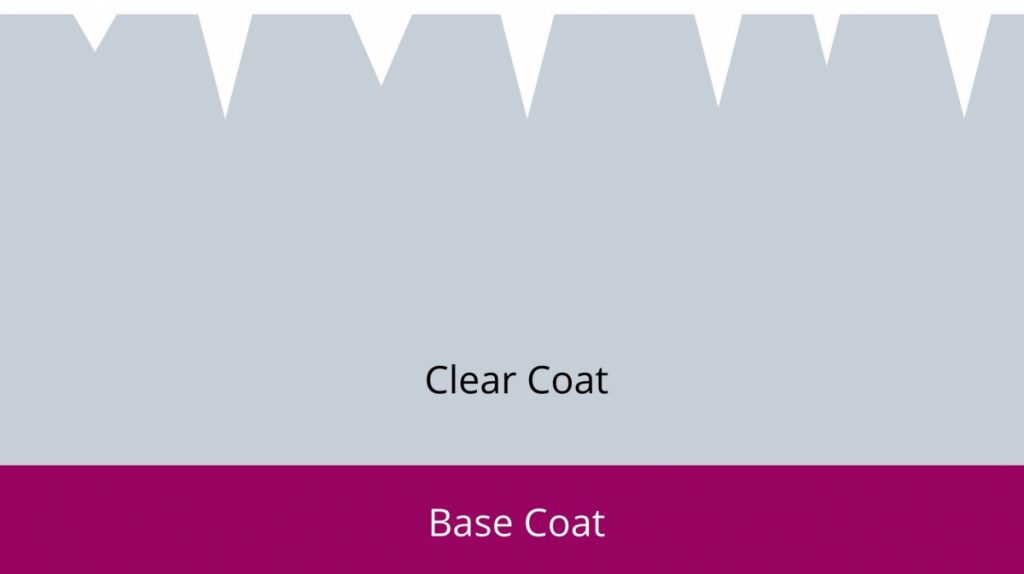
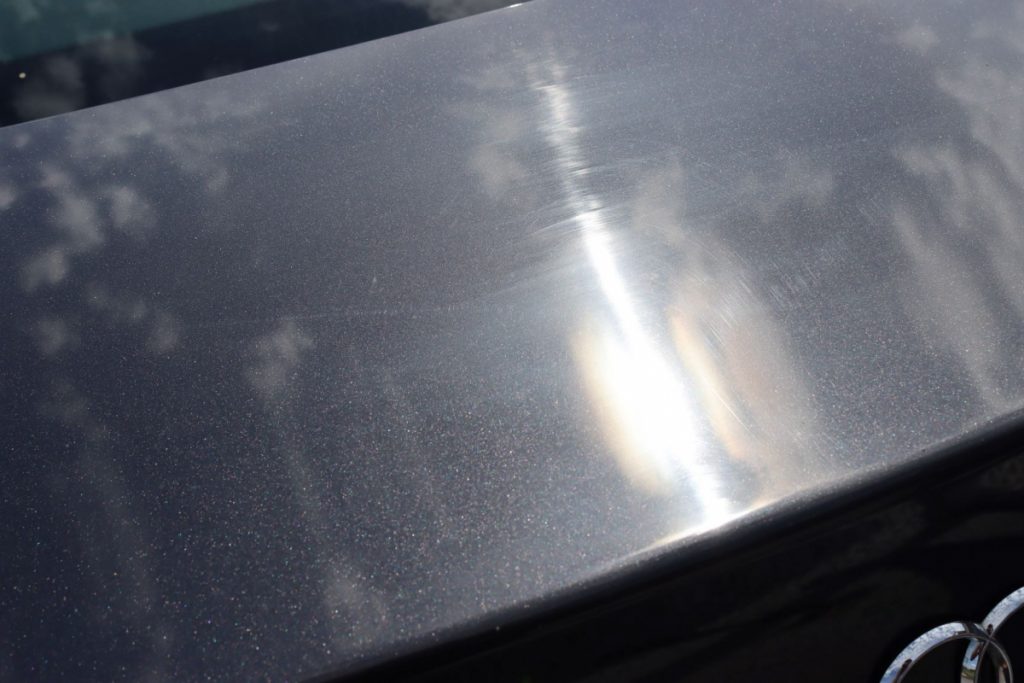
The only way to remove these scratches is by polishing, which removes a layer of the car’s paint to create a flatter surface. However, this should be used sparingly as there are only so many times you can do this before you run out of paint.
Even non-scratch, super-soft car covers have the potential to cause scratches. Even when they’re applied to a clean car, the risk is still there because dust settles very quickly and is almost imperceptible.
That’s why I avoid them at all costs. If you stick to the rest of the tips in this article, then your car will be protected from the sun, even without using a car cover.
If you want to read more of my ranting about car covers, then take a look at this article.
Avoid Polishing and Compounding
This is a tip that I rarely seen mentioned, but I think it’s actually one of the most important, and it’s a trap that a lot of people who are into detailing tend to fall into. And that, is over-polishing.
Polishing is often confused with waxing, however, they are very different things. Waxing is used to apply a layer of protection on the paint. Whereas polishing removes a layer of paint to take out scratches. Here’s a diagram to demonstrate.


So where does the sun come into all this then?
Well, your car’s clear coat contains UV inhibitors. These help to protect the base coat underneath from UV rays and subsequent fading. So it’s really important to preserve this clear coat.
Since polishing removes a layer of the clear coat, it effectively removes some of the UV protection it provides. So over-polishing can lead to big problems.
Of course, with extreme over-polishing, you will actually be left with no paintwork at all. But even with infrequent polishes you can have issues.
Polishing and compounding are two techniques used to remove a layer of clear coat. Compounding is more aggressive an removes more clear coat than polishing though. So it’s safer to polish more than it is to compound.
Take a look at this article on polishing vs compounding for a more in-depth explanation.
The problem is though, that if you have clear coat scratches and swirl marks, polishing and compounding is the only way to tackle the issue permanently.
So what do you do if you want to preserve the clear coat’s UV protection, but you also want glossier paintwork.
Well there is a product that can help here, and it’s called a glaze. Glazes effectively fill in these scratches to create a flatter surface that hides the scratches, but doesn’t permanently remove them.
Take a look at this article on glazes vs polishes to learn more about the differences between these detailing products.
Ensure the Car is Safe to Drive
Everything we’ve spoken about so far is cosmetic, and about keeping your car looking good despite the sun’s harsh UV rays and the problems with the heat caused.
However, it’s vital not to neglect the far more important thing, and that is how safe the car is to drive. Of course, keeping your vehicle safe to drive is normally associated as more of a winter issue, but the hot summer months can present problems too.
Here’s how to keep your car safe to drive in hot weather.
- Check the tire pressure: the hot pavements can cause low-pressure and increase the risk of blow-outs.
- Make sure the engine cooling system is working properly.
- Ensure the vehicle’s battery is working properly as higher temperatures can cause it to wear out faster.
- Keep the brake fluid, oil, and power steering fluid at the recommended levels as hot weather can lead to evaporation.
Thanks for reading! I hope you’ve found this article helpful. Don’t forget to check out the rest of the website to learn everything you need to about making your car look its best.

